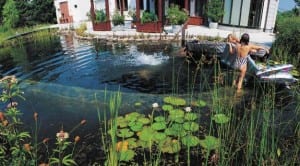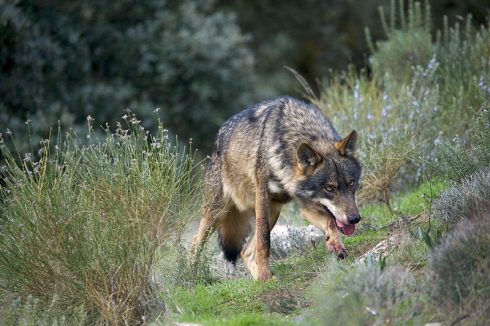Now that Spring is finally here it’s time to get in the garden. Here are our top tips for the month:
By Clodagh and Dick Handscombe
Many vegetable and herb sowings and plantings can be made this month including some with natural antibiotic properties. These include aubergines, onions, water melons, nasturtiums, ginger and horse radish. However if you are situated high up inland wait until late April or early May unless you protect young plants with plastic or fleece tunnel cloches until the last frosts are past.
By the way there is a ready market for young horse radish plants if you are an enterprising farmers market stall holder. Read the label on a commercial bottle of horseradish sauce and you will immediately see why the natural fresh product must be best.
There is a new source of comfrey plants. Joseph Scott has taken over a 15 acre smallholding in the Cazorla National Park area of Jaen and plans to become a reliable supplier of some of the useful natural plant products that we recommend in our books. Currently he has comfrey cuttings on offer. By midsummer in time for feeding your tomatoes and squash he plans to have comfrey concentrate and nettle concentrate. Contact Joseph on consuelda@haciendadelcarrizal.com.
A Spanish neighbour turned up with a sack of nettle leaves yesterday having weeded his summer house garden for Easter. The leaves are already steeping in water to produce a good nitrogen feed for our over wintered and spring planted leaf vegetables. When we ran out of nettle feed a few months ago we switched to an even older but effective feed – diluted pee.

The abandoning of fruit orchards in many areas is resulting in more outbreaks of insect and fungal attacks. We therefore suggest that you spray fruit trees monthly with ecological sprays. There are photographs of what the major insect and fungal problems and descriptions of our ways of preventing and dealing with each in ‘Growing Healthy Fruit in Spain’.
When thinking about what flower seeds to sow and flowering plants to plant recognise that many flowers are edible and can be used to brighten up salads , add flavour and make your daily diet more interesting and healthy. The ones we use most are chives, courgettes, squash, broccoli, , nasturtium, rocket, roses, thyme, violas, and hibiscus. We started adding the latter to salads after having been treated to a multi coloured hibiscus flower salad by the Director of the Havana Botanical Garden when on a study tour of Cuba.

Health organisations in the UK have admitted that they were wrong in recommending that the eating of eggs should be restricted for a healthy diet. With ‘Going to work or garden on an egg’ now again seen as a good choice there is no better time to set up a hen house and run in a shady corner of the garden for a two or three laying hens. If you feed them on the outer leaves of green vegetables and artichokes, gluts of squashes and weeds such as dandelions with natural grains you will not only have ecological eggs but some high in nitrogen fertilizer for next years crops. But do compost it for six to nine months before use and use it sparingly as it is strong.
If you have not cleaned out and thinned the reeds in the garden pond for some years now is the time to do so . The water is warm enough to work in and damaged plants will soon recover in the warm Spring weather. The nutrient rich roots and mud from the bottom of the pond can go on the compost heap.
Efforts in the garden now will be well repaid with copious summer harvests and colourful gardens.
Clodagh and Dick Handscombe have gardened in Spain for over twenty years. Their books can be bought at www.santanabooks.es









I read the eco-garden articles and noticed a book entitled ‘Your Garden in Spain’ but when I clicked on the link for http://www.santanabooks.es it does not exist. Can you please advise as to where this book can be purchased
Thank you